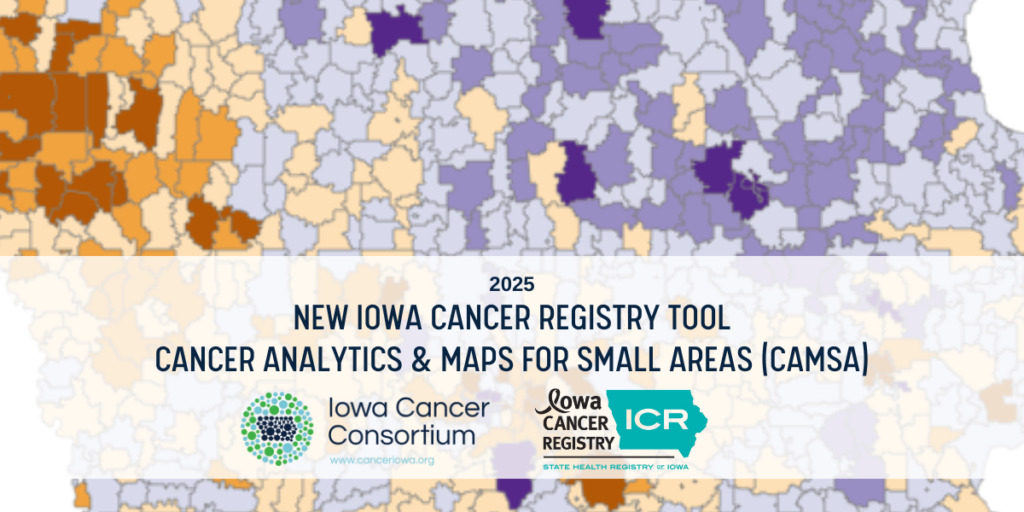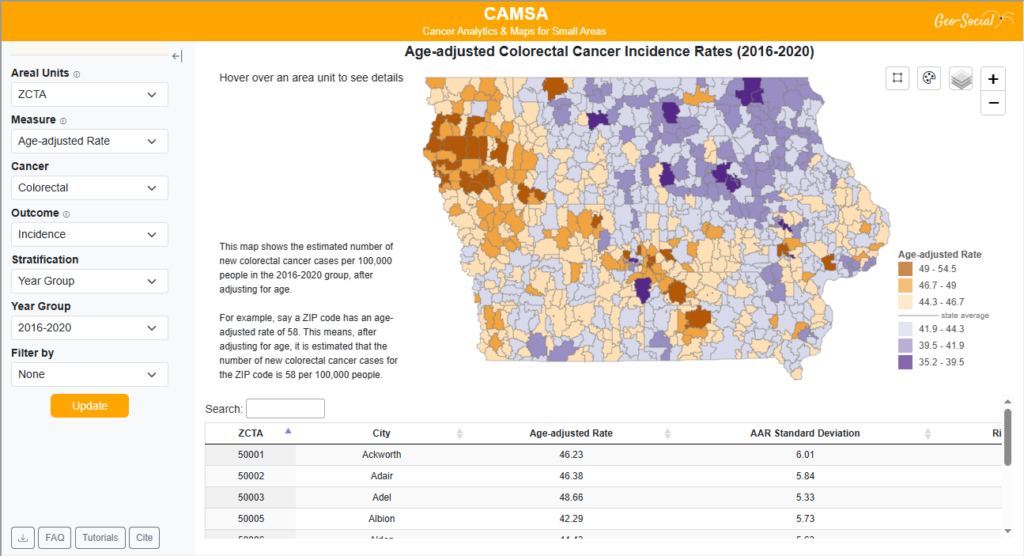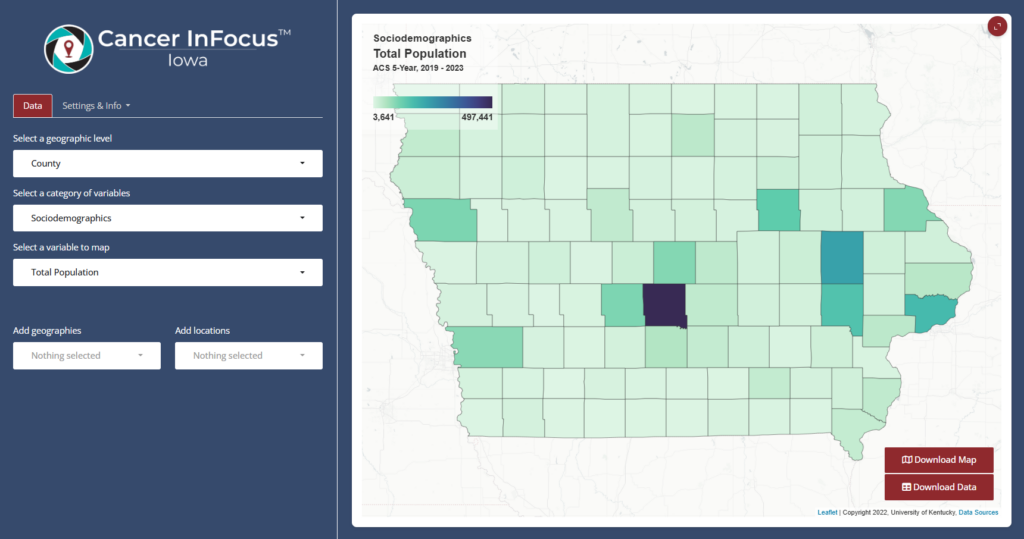New Iowa Cancer Registry Tool – Cancer Analytics & Maps for Small Areas (CAMSA)

By Alexa Stallings
The Iowa Cancer Registry is revolutionizing the way cancer data is explored with its newest tool, Cancer Analytics & Maps for Small Areas (CAMSA). With CAMSA, Iowans can now access cancer data at a more local level than ever before, giving communities greater insight into cancer cases and risk compared to the state. CAMSA joins the other interactive data tools on the Iowa Cancer Registry website—Iowa Cancer InFocus and Iowa Cancer Zones Map —to provide various resources for accessing Iowa cancer data.
How do I decide which tool to use to find cancer data?
With so many different cancer data resources available, identifying the right tool can feel overwhelming. The Data Tool Decision Tree is the best place to start when determining your options. This flow diagram will guide you through a series of prompts about the type of data you are searching for and lead you to the most relevant resources. Whether you are searching for survival rates, risk factors, case counts, or other cancer data, the Data Tool Decision Tree will guide you in the right direction based on the population level you are analyzing.
Data Tool Decision Tree
When should I use the Cancer Analytics & Maps for Small Areas (CAMSA) tool?
CAMSA provides a new opportunity to explore cancer data in Iowa at the local level, addressing previous limitations in accessing cancer data for small areas through its use of age-adjusted estimates. If you are looking for ZIP code data, CAMSA is the tool to use. CAMSA also displays county level data, but since the map only displays estimates, a different tool such as Iowa Cancer InFocus should be used if you need exact data values. This visualization tool can be used to keep Iowans informed about what is happening in their communities and guide local-level cancer reduction strategies.
CAMSA allows you to look at cancer incidence and risk probability estimates on different factors for the eight most common cancers in Iowa. Detailed video tutorials on how to use the tool are available on the Iowa Cancer Registry website. The CAMSA tool uses data from the Iowa Cancer Registry . For more information on how the tool’s estimates are generated, check out these frequently asked questions.
Cancer Analytics & Maps for Small Areas (CAMSA)
When should I use the Iowa Cancer InFocus tools?
Iowa Cancer InFocus includes three tools for looking at cancer data at the county level. You should use these tools if you are interested in finding true data values (not estimates like CAMSA) for cancer incidence or mortality rates, county population demographics, social drivers of health, or cancer behavioral risk factors. The Cancer InFocus tool allows you to create data maps based on specific variables. If you want to examine the relationship between two variables, the (CIF)² (Bivariate) tool can display this information for you. To generate a cancer data report for a specific county or Area Development District in Iowa, the CIF Profiles tool is your go-to.
Cancer InFocus
When should I use the Iowa Cancer Zones Map?
If you are looking for cancer data for a specific city or zone in Iowa, check out the Iowa Cancer Zones Map. This tool displays cancer incidence and population demographics for 48 zones in Iowa. Data for large urban areas may be available at the subcounty level if they have been designated their own zone. For example, there are 7 zones within Polk County. Additionally, this tool provides cancer data for rural areas that were previously censored due to small population sizes. Each zone contains a minimum of 50,000 residents, and areas are grouped based on characteristics such as poverty, urbanicity, and racial/ethnic minority composition. The interactive map allows you to view data based on time period, cancer site, sex, and race/ethnicity.
Iowa Cancer Zones Map
Importance of the Tools
These interactive data tools from the Iowa Cancer Registry are important for keeping Iowans informed about the health of their communities and the state as a whole. Sarah Nash, The Director of Research, Analytics, and Dissemination at the Iowa Cancer Registry, shared “Whether for research purposes or community awareness, these new tools from the Iowa Cancer Registry provide accessible and user-friendly opportunities to explore Iowa cancer data.” To learn about ways that Iowans are combating cancer in the state, check out the Iowa Cancer Plan from the Iowa Cancer Consortium.

About the Author
Alexa Stallings is an Academic Research Assistant in the Department of Community and Behavioral Health at the University of Iowa College of Public Health. She will be entering her second year in the MPH program in the Department of Epidemiology in fall 2025. Alexa is interested in chronic disease epidemiology and is passionate about health promotion and disease prevention.




